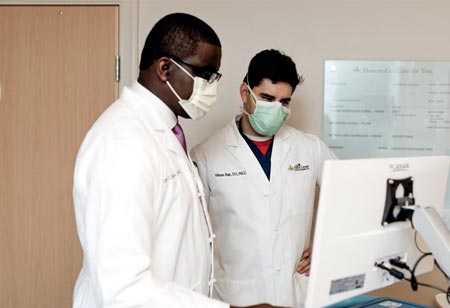

Thank you for Subscribing to Medical Care Review Weekly Brief

Heart failure is a disease of the heart muscle that results in weakening of its pumping function. Put simply, heart failure means the heart is not able to pump enough blood to meet the body’s needs. In fact, heart failure is a common condition, affecting as many as five to six million U.S. adults. Patients with heart failure often struggle with related conditions or symptoms that can be challenging to develop an effective treatment plan for and have a major impact how they feel day-to-day. The care of these patients is complex, time and labor intensive requiring a specialized team of experts to appropriately take care of them. In the USA, the total cost of care (direct and indirect costs) for HF in 2020 was estimated at $43.6 billion. On in-dept review it is clear that hospitalization costs are the key driver of heart failure-related costs, which has led to great emphasis on interventions to reduce admissions and readmissions. One such intervention is the application of remote monitoring technology.
However, the coronavirus disease-2019 (COVID-19) pandemic has had a significant impact on the way we care for patients, particularly those with heart failure (HF) who are at higher risk for morbidity and mortality. Prior to the pandemic many of these patients’ care would be provided in person either in the clinic or in the hospital. With the advent of the COVID19 pandemic and the need for reduced in-person visits, adoption of telehealth has been instrumental in continuing to care for this vulnerable patient population. We now have a series of remote monitoring technologies available that can enhance the care we provide.. These technologies allow for close monitoring for early signs of heart failure and assist the care team with therapeutic interventions which result in reduction in risk of admission and allows for ongoing management without the patient being seen in person. "Remote HF monitoring technology, combined with telehealth can allow for optimization of care for heart failure patients during the pandemic and beyond" Remote monitoring for heart failure patients is available in 3 platforms. The most common and easiest to implement is a structured telephone support service with frequent calls made to patients to review for changes in heart failure symptoms, weight, medication compliance, and the medical plan adjusted based on the patient’s report. Another platform of clinical importance is the use of invasive devices implanted in the pulmonary (lung) artery solely to monitor surrogates of worsening heart failure. These devices can predict a heart failure episode by monitoring changes in lung pressure i.e. the increased pressure of blood flowing from the heart to the lungs through the pulmonary artery can signal worsening heart failure — up to 2 weeks before the patient notices any signs or symptoms such as shortness of breath or weight gain. Changes in the pressures are monitored remotely from the comfort the patient’s home using the CardioMEMS™HF System (Abbott). Based on the data the care team gets from the system, adjustments are made to the patient’s medications or recommend lifestyle changes without needing a visit to the hospital or clinic. The CardioMEMS system is clinically proven to significantly reduce heart failure hospital admissions by 57% over an average of 12 months and improves quality of life for these patients. The third category of remote monitors is based on parameters derived from cardiovascular implantable electronic devices (implantable cardioverter-defibrillator [ICD] devices and cardiac resynchronization therapy–defibrillators [CRT-D]), which 15 to30 percent of heart failure patients have these implanted as part of their treatment plan. For example the Medtronic (Minneapolis, Minnesota) OptiVol monitoring system that evaluates for increased lung water content as a marker consistent with worsening heart failure. Another novel device that falls in this category is the Boston Scientific (Boston, Massachusetts) HeartLogic HF algorithm. The algorithm collects data from multiple sensors that are embedded within the Boston Scientific ICD and CRT-D. The algorithm generates a daily score which predicts the risk of a worsening heart failure event, even while the patient has no symptoms and up to 30 days prior the event. The score is made up of a composite of a change in heart sounds, lung water content, breathing rate, heart rate, and patient activity. An alert is triggered when there is a significant change in computed algorithm score and electronically transmitted to the care team. Allowing for the care plan to be adjusted without the patient having to come into the clinic. In summary, the COVID-19 pandemic has changed how and where we care for patients. Remote HF monitoring technology, as detailed above, combined with telehealth (video visits) can allow for optimization of care for heart failure patients during the pandemic and beyond. Our health system has employed this strategy with excellent outcomes thus far.